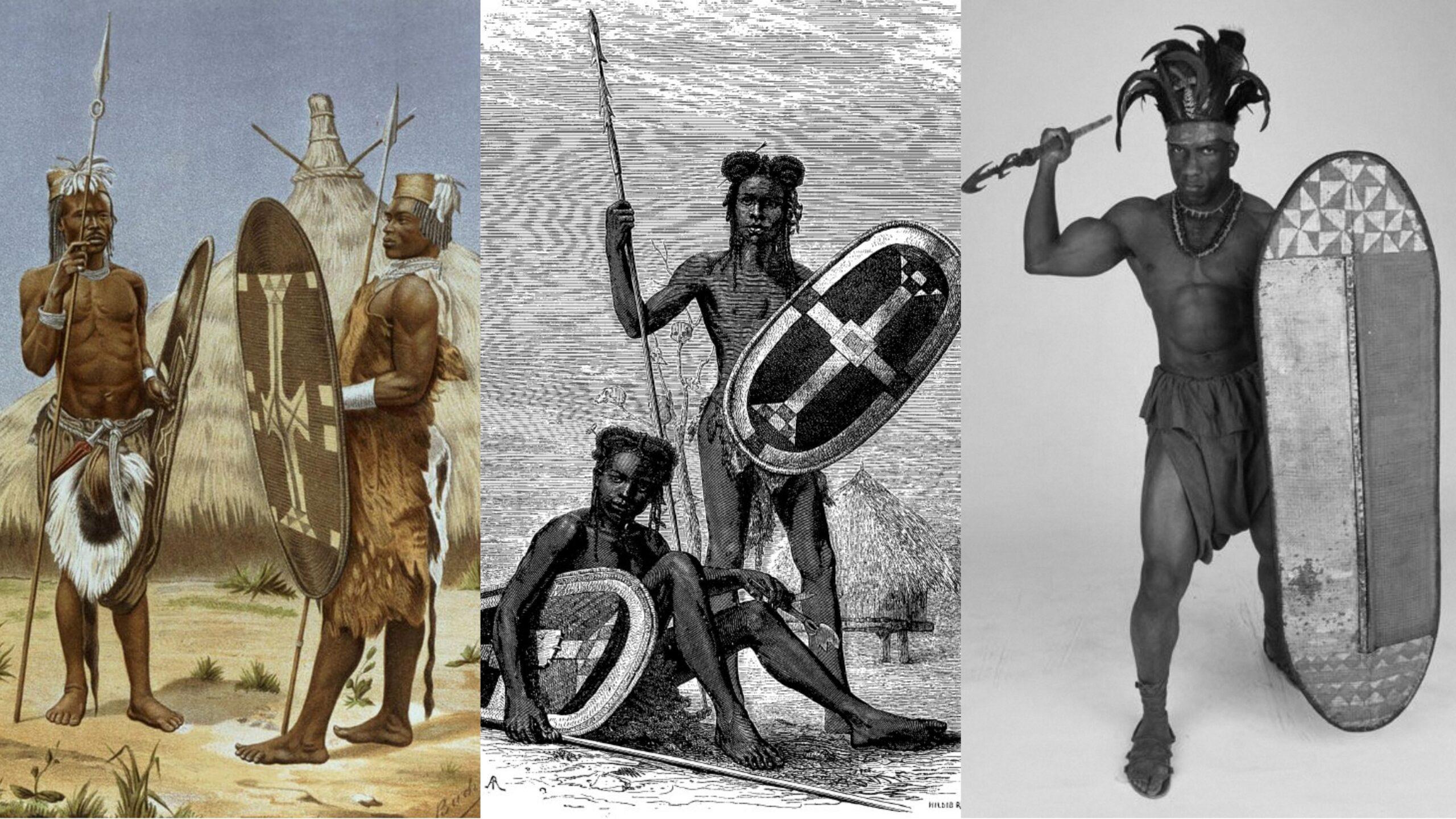The Azande (plural of “Zande” in the Zande language) are an ethnic group of North Central Africa.
Regions with significant populations
Central African Republic 96,500
DRC 2,061,000
South Sudan 1,040,000
They live primarily in the northeastern part of the Democratic Republic of the Congo, in south-central and southwestern part of South Sudan, and in southeastern Central African Republic.
The Congolese Azande live in Orientale Province, specifically along the Uele River; Isiro, Dungu, Kisangani and Duruma. The Central African Azande live in the districts of Rafaï, Bangasu and Obo.
The Azande of South Sudan live in Central, Western Equatoria and Western Bahr al-Ghazal States, Yei, Maridi, Yambio, Tombura, Deim Zubeir, Wau Town and Momoi.
History
The Zande were believed to be formed by a military conquest during the first half of the 18th century. They were led by two dynasties that differed in origin and political strategy.
The Vungara clan created most of the political, linguistic, and cultural parts. A non-Zande dynasty, the Bandia, expanded into northern Zaire and adopted some of the Zande customs.
In the early 19th century, the Bandia people ruled over the Vungara and the two groups became the Azande people. They lived in the savannas of what is now the southeastern part of Central African Republic. After the death of a king, the king’s sons would fight for succession.
The losing son would often establish kingdoms in neighboring regions, making the Azande kingdom spread eastward and northward. Sudanese raids halted some of northward expansion later in the 19th century.
As a consequence of European colonialism in the 19th century, the territory inhabited by the Azande was divided by Belgium, France, and Anglo-Egyptian Sudan.
During his travels in the late 1870s, the Austrian photographer Richard Buchta took photographs of Azande that were used in European publications about Central Africa and still constitute an important source of historical documentation.
Name
The word Azande means “the people who possess much land”, and refers to their history as conquering warriors. Variant spellings include Adio, Zande, Zandeh, A-Zandeh and Sandeh.
The name Niam-Niam was frequently used by foreigners to refer to the Azande in the 18th and early 19th century. This name is probably of Nuer origin, and means “great eaters” in that language, supposedly referring to cannibalistic propensities.
This name for the Azande was in use by other tribes in southern Sudan, and later adopted by Westerners. Today the name Niam-Niam is considered inadequate and pejorative.
Demographics
The Azande population is spread over three Central African countries: South Sudan, the Democratic Republic of the Congo and the Central African Republic. Azande territory extends from the fringes of the South-central and Southwest Upper basin of South Sudan to the semitropical rain forests in Congo, and into the Central African Republic.
Estimates of Azande speakers reported in SIL Ethnologue are 730,000 in the Democratic Republic of the Congo, 62,000 in the Central African Republic and 350,000 in South Sudan.
Settlements
The types of houses that the Azande built were made from mud and grass, which they framed around wooden poles and thatched with grass. Each household was built around a courtyard so that they can gather and converse with each other.
Adjacent to these courtyards were kitchen gardens that were for plants that did not require large scale farming such as pineapples and mangos.
Social and political organizations
The Azande were organized into chiefdoms that can also be called kingdoms. The Avongara were the nobility and passed it down through their lineage.
Chiefs had many roles within the chiefdoms such as being military, economic, and political leaders. All the unmarried men were laborers and warriors.
Within the chiefdoms clan affiliation was not stressed as important at the local level. They had “local groups” that were similar to “political organizations”.
Agriculture
The Azande are mainly small-scale farmers. Crops include maize, rice, groundnuts (also known as peanuts), sesame, cassava and sweet potatoes. Fruits grown in the area include mangos, oranges, bananas, pineapples, and also sugar cane. Zandeland is also full of palm oil and sesame.
Since then, the Azande have hunted and farmed millet, sorghum, and corn. Major cash crops include cassava and peanuts.
The region in which the Azande live has two seasons. During the rainy season the women and men both help get food from the river.
Women help with the fishing in dammed streams and shallow pools collecting fish, snakes, and crustaceans. Men make and set up traps in the river to help with the collection of food. Another food that the Azande collect and eat is termites which are their favorites.
Language and literature
The Azande speak Zande, which they call Pa-Zande, which has an estimated 1.1 million speakers. Zande is also used to refer to related languages in addition to Azande proper, including Adio, Barambu, Apambia, Geme, Kpatiri and Nzakara.
Recorded Zande literature is mostly oral, some of it published by missionaries in the early 20th century, and some of it translated in the 1960s.
Visual culture and music
As in other African societies, applied arts, artifacts, music and oral literature are key elements of Zande culture. They are most famously known for their throwing knives, called the “shongo”.
These show the skill of Zande metal workers with its curved and multi-bladed features. Their visual art includes sculptures made from wood or clay. Many of these represent important animals or ancestors.
Zande also have created drums and thumb pianos, called sansa, that sometimes looked like people, animals, and abstract figures. These instruments were used at celebrations like marriages and community dances.
 The African History Truly African
The African History Truly African

